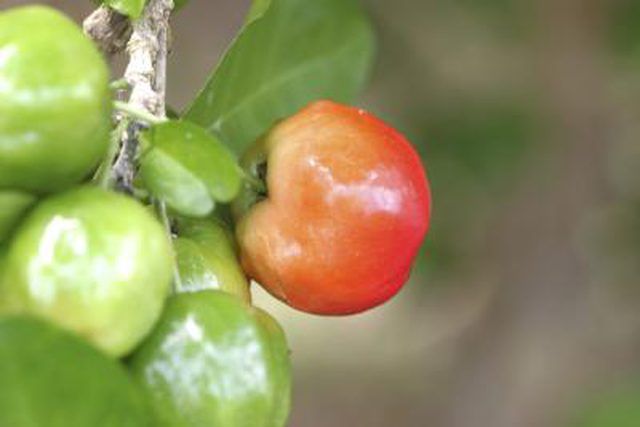Bulbs
Flower Basics
Flower Beds & Specialty Gardens
Flower Garden
Garden Furniture
Garden Gnomes
Garden Seeds
Garden Sheds
Garden Statues
Garden Tools & Supplies
Gardening Basics
Green & Organic
Groundcovers & Vines
Growing Annuals
Growing Basil
Growing Beans
Growing Berries
Growing Blueberries
Growing Cactus
Growing Corn
Growing Cotton
Growing Edibles
Growing Flowers
Growing Garlic
Growing Grapes
Growing Grass
Growing Herbs
Growing Jasmine
Growing Mint
Growing Mushrooms
Orchids
Growing Peanuts
Growing Perennials
Growing Plants
Growing Rosemary
Growing Roses
Growing Strawberries
Growing Sunflowers
Growing Thyme
Growing Tomatoes
Growing Tulips
Growing Vegetables
Herb Basics
Herb Garden
Indoor Growing
Landscaping Basics
Landscaping Patios
Landscaping Plants
Landscaping Shrubs
Landscaping Trees
Landscaping Walks & Pathways
Lawn Basics
Lawn Maintenance
Lawn Mowers
Lawn Ornaments
Lawn Planting
Lawn Tools
Outdoor Growing
Overall Landscape Planning
Pests, Weeds & Problems
Plant Basics
Rock Garden
Rose Garden
Shrubs
Soil
Specialty Gardens
Trees
Vegetable Garden
Yard Maintenance
How to Plant & Grow Acerola Plants
How to Plant & Grow Acerola Plants. Growing acerola plants (Malpighia punicifolia) in your yard allows you to taste this cherry-like fruit at its best. Acerola is a bright red, tart, three-lobed fruit, which is high in Vitamin C. Its flavor begins to deteriorate four hours after picking. Hardy in U.S Department of Agriculture plant hardiness zones...

Growing acerola plants (Malpighia punicifolia) in your yard allows you to taste this cherry-like fruit at its best. Acerola is a bright red, tart, three-lobed fruit, which is high in Vitamin C. Its flavor begins to deteriorate four hours after picking. Hardy in U.S Department of Agriculture plant hardiness zones 9B through 11, this small tree or shrub is deciduous in cool climates and grows to 15 feet tall, but can be pruned to control its size. Fruit production occurs twice-yearly in cool climates and three times a year in warm zones. Acerola leaves are irritating to some people, so wear protective clothing when handling this plant.
Things You'll Need
Long-sleeved shirt
Long pants
Gloves
Spade
24-8-16 fertilizer
Pruning shears
Rubbing alcohol
Insecticidal soap spray
Put on a long-sleeved shirt, long pants and gloves, and dig a hole twice as wide and the same depth as the acerola root ball with a spade. Dig the hole in a full-sun or partial-shade site in any well-drained soil except acid soil. Acerola produces the most fruit in full-sun sites.
Place the acerola in the hole so that the top of the root ball is level with the soil surface, and fill in the gaps around it with dug soil. Firm the soil gently, and water the acerola thoroughly. Apply water regularly throughout the first growing season so that the ground is constantly moist but never sodden.
Feed your acerola with a 24-8-16 fertilizer diluted at a rate of 1 tablespoon per gallon of water, and spray the foliage with the fertilizer solution every two weeks while the shrub is actively growing, or apply according to the manufacturer's instructions.
Sterilize pruning shears by wiping the blades with rubbing alcohol, and prune acerola in winter or early spring, removing dead, diseased and crossing stems where they join the rest of the shrub. Prune acerola to control its size by removing stems at the desired length just above a leaf node. Sterilize pruning shears again after use.
Examine acerola leaves and stems weekly for signs of aphids, whitefly or scale. Aphids and whitefly are tiny insects that cluster on shoot tips and the undersides of leaves, and scale look like tiny shells on leaves and stems. Spray heavy infestations with a ready-to-use insecticidal soap spray during the morning or evening, and repeat every two weeks as needed.
Tips & Warnings
Acerola grows well when it receives 39 to 78 inches of water per year, but tolerates drought when established. Drought followed by irrigation promotes flowering and fruiting. A drop in temperature also triggers blooming and fruit production.
Acerola tolerates heavy pruning and produces fruit even when grown as a 5-foot bush.
If acerola grows poorly despite regular fertilization and water, the soil might be deficient in boron or iron. Your local soil testing service can check the levels of these and other trace nutrients in your soil.
Acerola grows best in soils with a pH of 6.5 through 7.5 and do not perform well in soils too acidic. Test your soil's acidity level and if to acidic, work lime into the planting site based on your soil test results.
Acerola sometimes suffers from root-knot nematode (Meloidogyne spp.) infections, which cause wilting and weak, stunted growth. Dig up and dispose of shrubs that consistently wilt in moist, well-drained soil and grow poorly despite fertilization, to prevent the spread of infection.